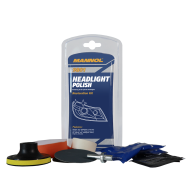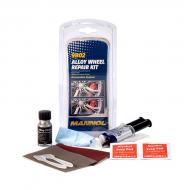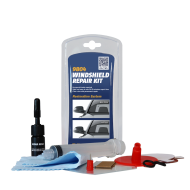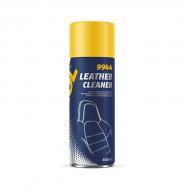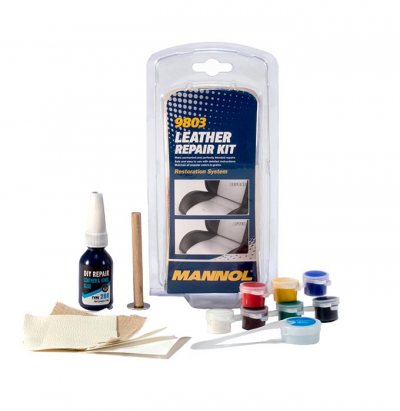
Leather Repair Kit- a convenient and easy-to-use kit for restoring surfaces made of natural and artificial leather and vinyl. It can be used both for the repair of car interior upholstery and panels, and in everyday life for the repair of furniture, leather clothing, shoes, bags and suitcases, haberdashery, as well as seats of boats, motorcycles and other motor vehicles, roofs of convertibles, etc.
Properties:
- Repairs any holes, cracks, cuts, burns on leather and vinyl surfaces, as well as dents on the latter;
- The kit includes heat-resistant repair compounds of seven colors, allowing you to get any shades when mixing. The shade corresponding to the surface to be treated can be selected using the attached table;
- The kit includes a set of three sheets of heat-resistant paper with the most common textures of leather and vinyl;
- The desired result is achieved without significant costs.
Application:
1. Prepare and clean the damaged area.
Clean the damaged area with a household vacuum cleaner. Before starting work, make sure that the area is dry. Carefully cut off the worn places and excess threads, as well as the charred edges with scissors or a knife. When burning, remove all charred material. Give the place of damage smooth edges – you should get a hole in the material with smooth edges.
2. Insert the fabric backing under the damaged area. Use a spatula to push the fabric backing under the hole in step 1. To repair large holes larger than 6 mm, cut the fabric backing to a size slightly larger than the resulting hole. Use a spatula to smooth out the fabric backing. Glue the fabric backing on the inside with vinyl glue. Dry with a Hairdryer.
3. Choose a heat-resistant paper with the texture that best matches the texture of the damaged surface. On the back of the selected sheet of heat-resistant paper, draw the outline of the damaged area. This will allow you to correctly position the heat transfer point for the tool in point 8.
4. Repair deep damage. For deep damage, such as on a vinyl dashboard, use clear vinyl adhesive with filler and a spatula to level the damaged area to the original surface level. The glue will shrink slightly as it dries, leaving a void that will later be filled with a colored repair compound.
5. Using the table for the selection of color or empirically identify a set of repair compositions which when mixed will create the necessary shade. Mix this set in the required amount in the mixing container to get the desired shade. Check that the shade matches by rubbing a small amount of the mixture into the undamaged surface, then remove it with a cloth.
6. Apply the repair mixture. Once the vinyl glue is dry, use a spatula to apply the mixture evenly and gently to the damaged area. Wipe off any excess around the hole or damage. Do not cover the area of damage.
7. Place heat-resistant paper with the texture on the area to be repaired. Glue it on top of the repair mix, making sure that the marked contour is directly above the damaged area. Don't move it. If the repair takes place on a vertical surface, secure the paper with tape on top.
8. Heat treatment. This is a very important stage in the repair process. Turn on the iron and let it warm up to a high temperature for at least four minutes. Place the tip of the heat transfer tool directly on the iron and allow a few minutes to warm up from the iron. Then press the tool against the working contour on heat-resistant paper and stroke the area under repair in a circular motion with a little effort for 20-30 seconds. Remove the heat-resistant paper from the repaired area.
The kit includes:
Heat-resistant repair compound of seven colors (black, blue, green, red, brown, white and yellow) - 7 PCs.
Vinyl glue - 1 PC.
Fabric backing - 1 PC.
Set of heat-resistant papers with three different textures - 3 PCs.
Table for selecting a shade - 1 PC.
Spatula - 1 PC.
Mixing capacity - 1 PC.
Heat transfer tool - 1 PC.













